A lush, well-maintained lawn is typically the goal for homeowners, but is the obsession with a pristine monoculture of grass worth it? Wildflowers like violets often pop up in lawns and are often the victims of ruthless herbicide or weeding removal. But could these flowers actually be beneficial? Can you save yourself time and money by embracing the wild violets in your lawn? Here are 9 reasons to welcome violets in your lawn for a more sustainable landscape.
What Are Wild Violets?
Viola sororia, or wild violets, are low-growing perennials with heart-shaped leaves and large purplish-blue flowers. Sometimes called Missouri violet, meadow violet, or wooly blue violet, these flowers are often considered weeds because of their unwanted appearance in lawns and gardens.
The prolific plants spread by seed and underground with rhizomes. They thrive in moist soils and sometimes become invasive when their seeds germinate in vast quantities.
Are Wild Violets Good for Your Lawn?
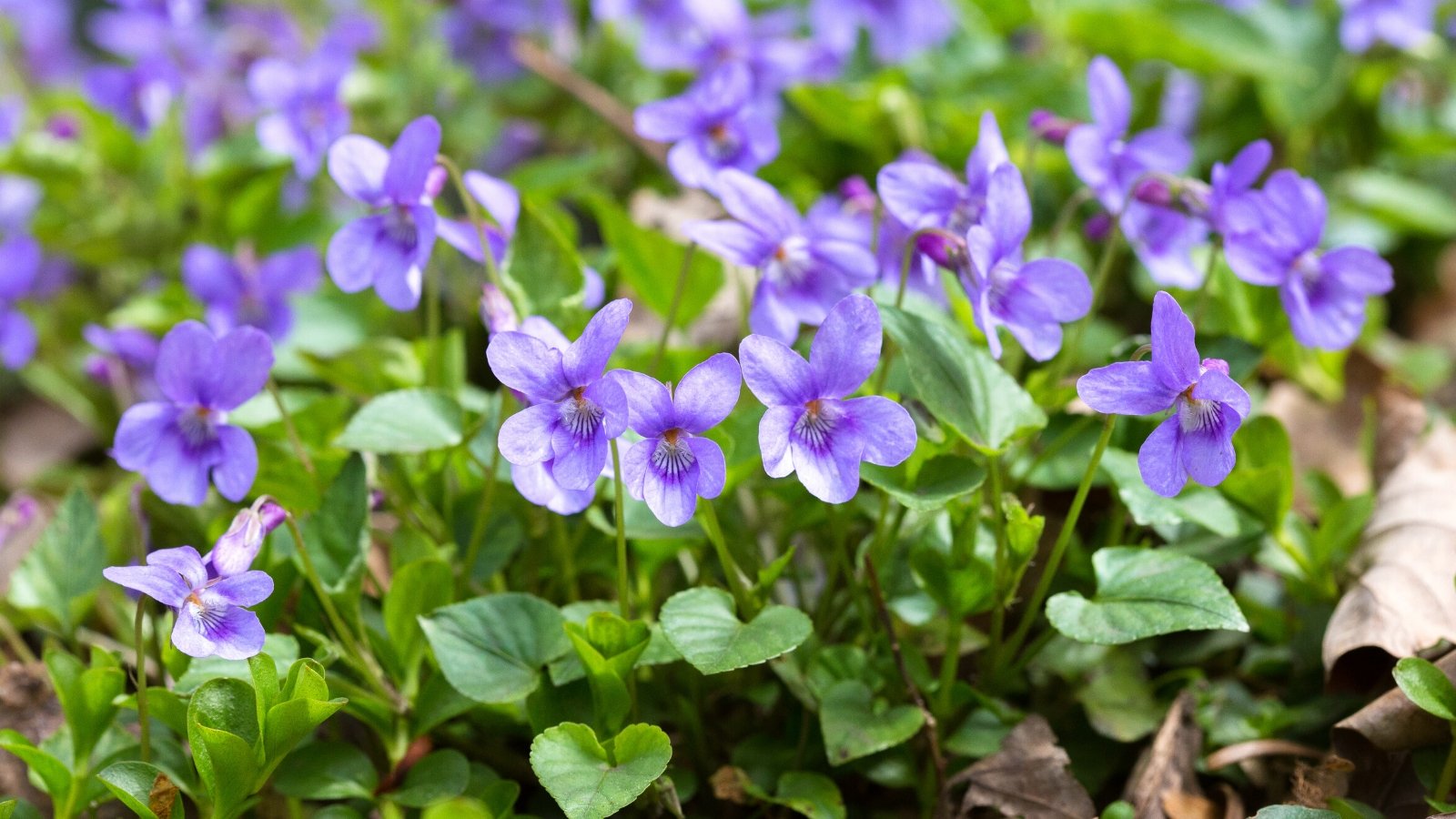
Wild violets can be beneficial for your lawn and local ecosystem. The flowers provide valuable resources for pollinators like bees and butterflies. The glossy, heart-shaped leaves are attractive and fill in patchy areas of excess moisture or shade where grass has trouble growing.
Violets are low-growing and stay green all year long. This ensures a more verdant lawn when some turf grasses turn yellow in the summer heat. These plants are very hardy and can withstand both excess moisture and drought.
These humble wildflowers are typically the recipients of aggressive weeding attacks using chemical and mechanical methods. They self-seed prolifically and are difficult to kill. Embracing violets in your lawn can cut down on herbicide use and headaches. Moreover, violets can add a rainbow of edible and medicinal beauty to your landscape while reducing overall maintenance.
9 Reasons to Embrace Wild Violets
The purplish-blue flowers create a stunning color display alongside sunshiney dandelion blooms and dark green turf grass. Still, many homeowners experience constant headaches as they try to remove and attack these resilient little flowers. Here are 9 reasons to stop fighting the violets and enjoy a more relaxed, sustainable landscape.
Greener Lawn in the Summer
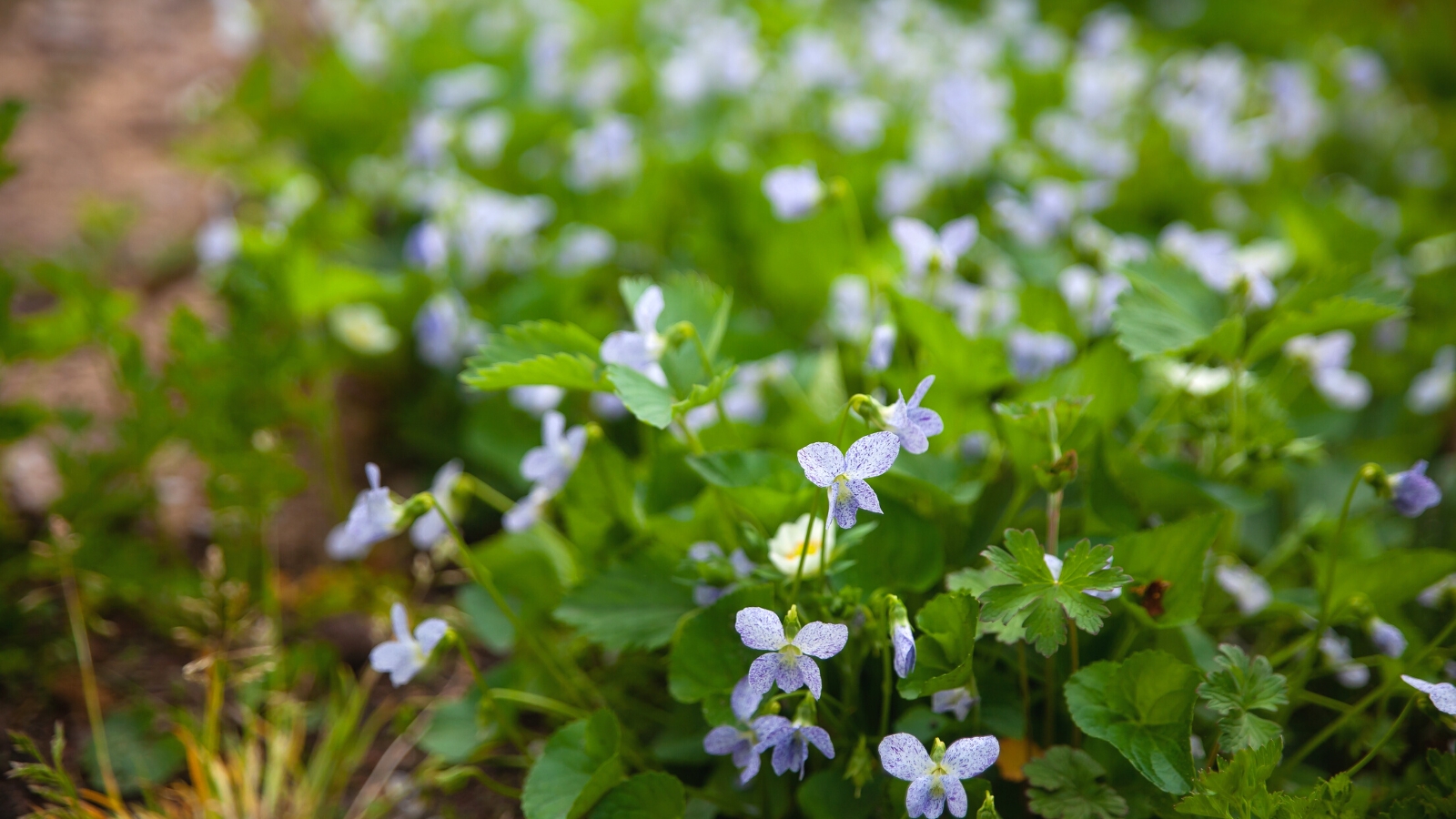
While many turf grasses turn yellow or brown in the summer, wild violets retain their beautiful dark green color. If you leave the violets to grow, their heart-shaped glossy leaves will ensure a consistent green texture across your lawn. These plants are especially moisture-retentive, so they can withstand dry spells better than grasses.
The visual appeal of a greener lawn is pleasant, and the diversity in leaf shapes adds something unique to regular ol’ grass. Better yet, these so-called weeds can conserve water by enhancing the soil moisture around your grass and reducing the need for excessive irrigation.
Vital Resources for Pollinators
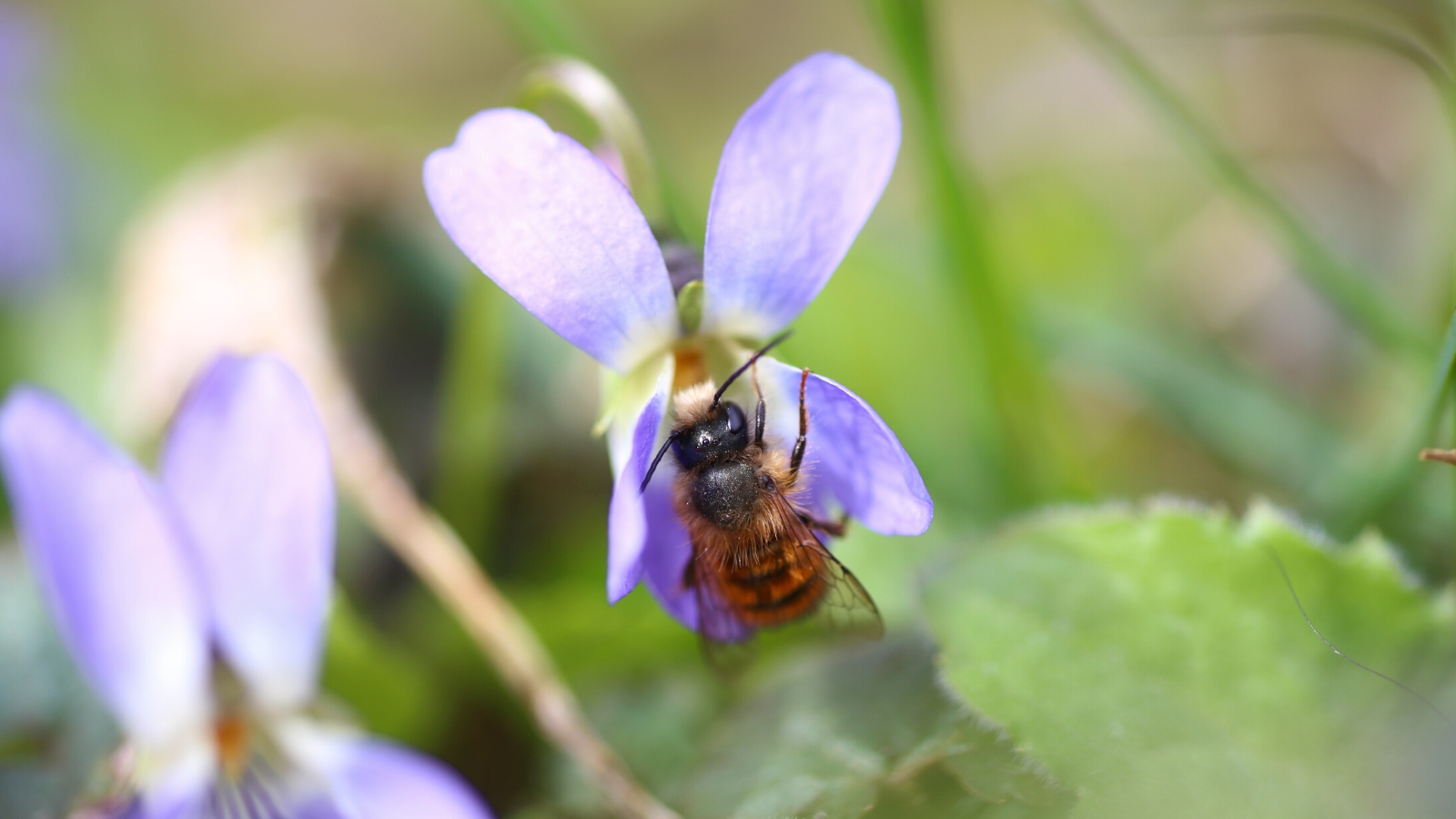
These little flowers bloom early in the spring, providing important nectar resources for pollinators as they come out of hibernation. Sweat bees (from the genus Halictidae) and mason bees (Osmia spp.) are the key pollinators of the flowers. It is hypothesized that the bees enjoy the dark purple of the flowers that draw in extra heat from the sun, so they stay warm and cozy while sipping on the nectar and collecting pollen in the cool days of spring.
When violets grow near dandelions or other early spring blooms, the bees will still hop between the diversity of flowers. However, the violet nectar and pollen are the most nutritious and attractive to wild bees.
Whether you raise honeybees or simply want to contribute to local ecosystems, letting violets flower in your yard is a small step you can take to reduce global bee declines. Better yet, these pollinator resources will bring bees to your garden to aid in pollinating your crops later in the season.
Watch More Beautiful Butterflies
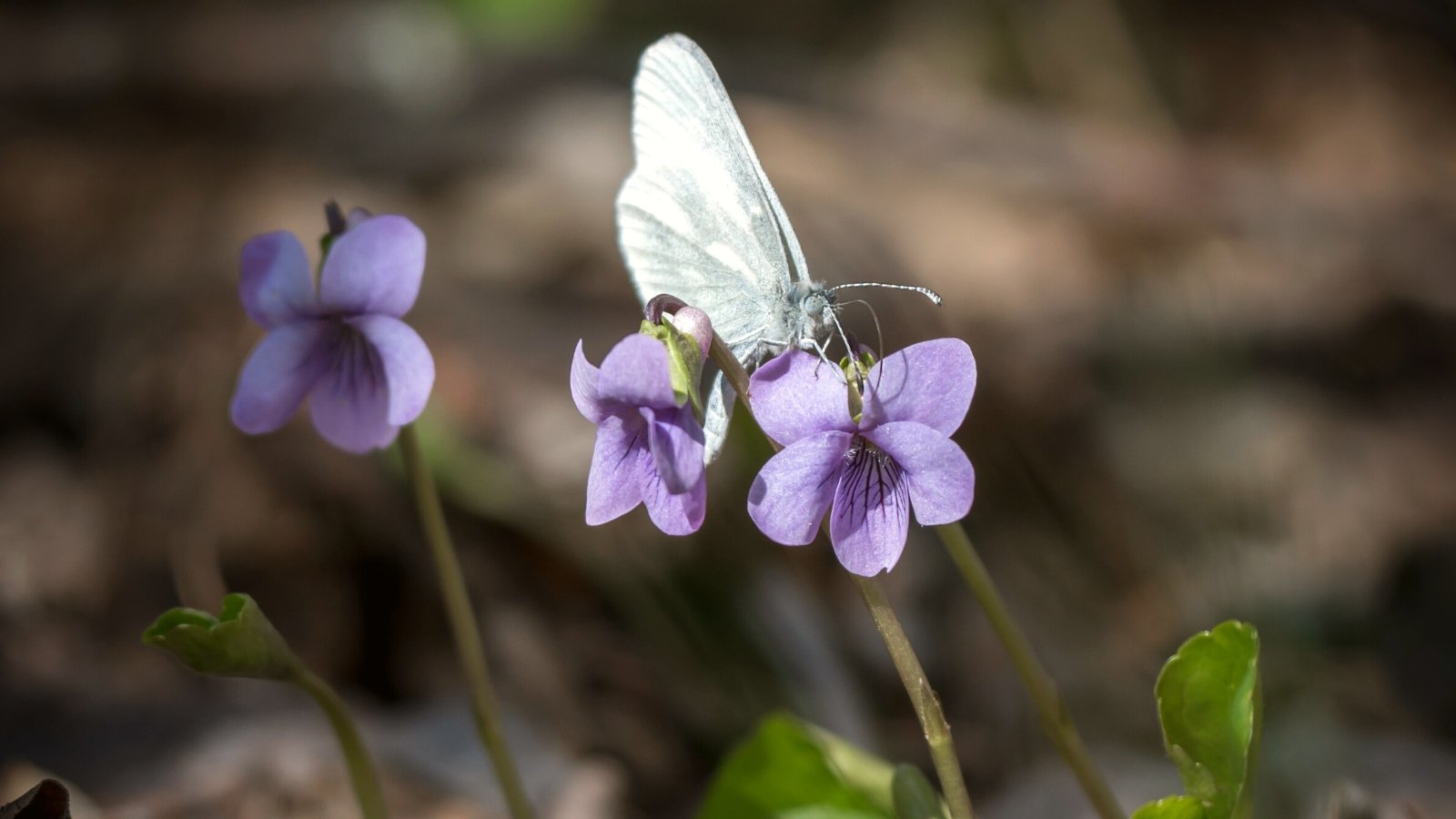
If you want to observe more gorgeous butterflies fluttering around your yard, leave the wild violets to flourish amongst your grass! While many pollinators love these bright-colored blooms, they are particularly attractive to native butterflies. Wild violets are the host plants for a large diversity of butterflies called fritillaries. In the same way that monarch caterpillars feed specifically on milkweed, about fourteen species of fritillary caterpillars feed exclusively on violets.
Butterflies in the Speyeria and Bolloria genera are specifically dependent on these humble weeds. These butterflies gravitate to the lovely smell of violet flowers and lay their eggs on the plants in the spring. When the eggs hatch, the caterpillars chomp on the nutrient-dense leaves and enjoy safe shade tucked amongst the violet foliage.
Interestingly, the fritillary butterflies sometimes lay their eggs in weedy, shaded places where violets have not yet established. Scientists suspect that the butterflies lay up to two thousand eggs, so it does not matter if some of them get lost. But interspersed violet growth amongst other plants is usually enough to help some caterpillars find their way.
If you truly love butterflies and want to invite neighborhood kids to enjoy these fluttering creatures, let the violets proliferate and watch the blanket of blue blooms magnetize these mystical insects.
Beautiful Splashes of Color
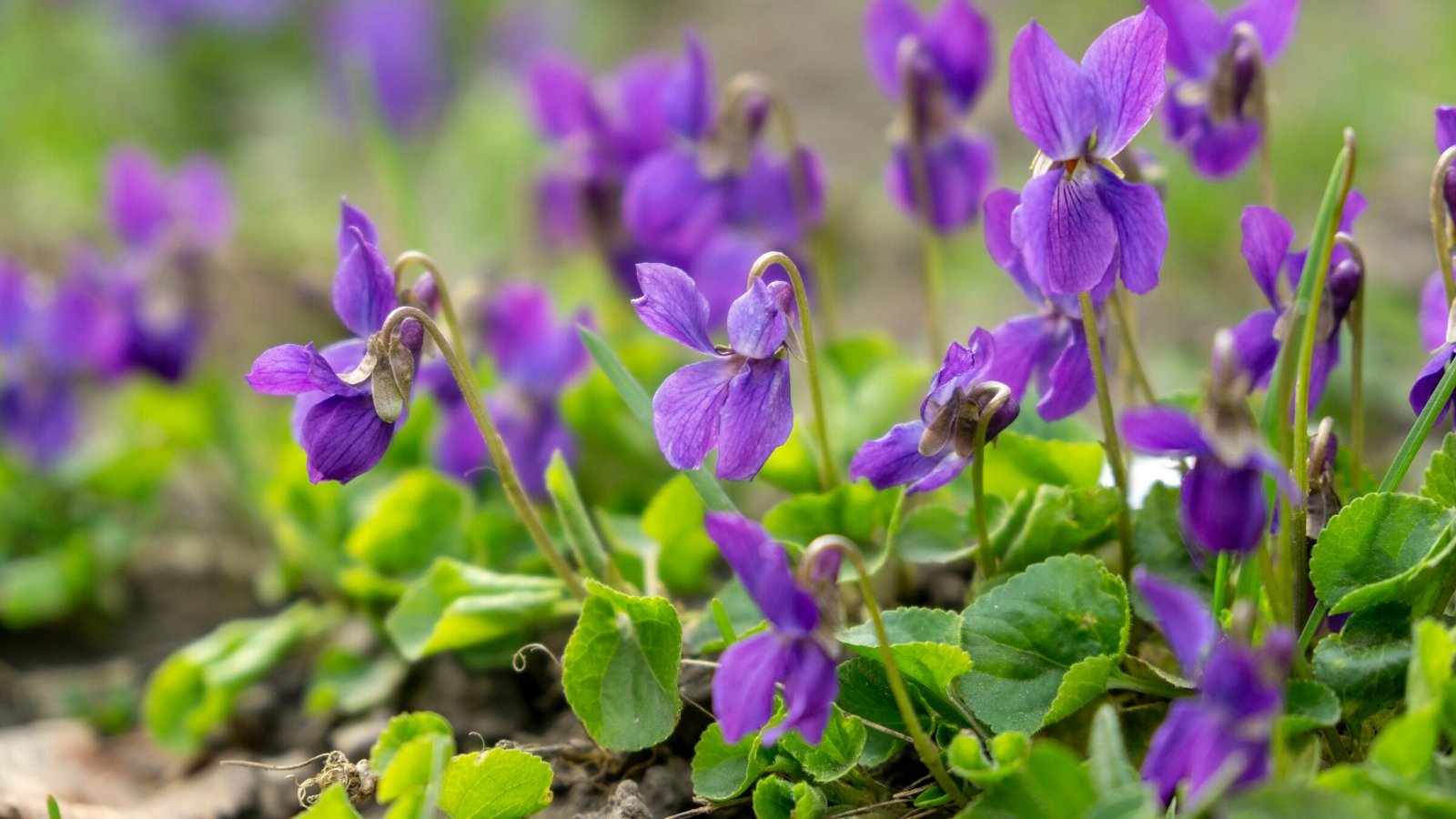
As alternative lawns, raised bed gardens, and wildflower plantings become more popular, the aesthetic appeal of a bland green lawn is less trendy. Add some color to your life by embracing the wild violets! These native flowers are truly a striking sight with their vibrant purple hues and adorable yellowish-white centers.
From a distance, blossoming violets may look like a sprinkle of purple dotted across your lawn or a blanket of blue emerging from a lush backdrop. While you watch the butterflies and bees buzz with excitement, passersby can enjoy the unique colors of your sustainable lawn.
More Lush Growth in Shade
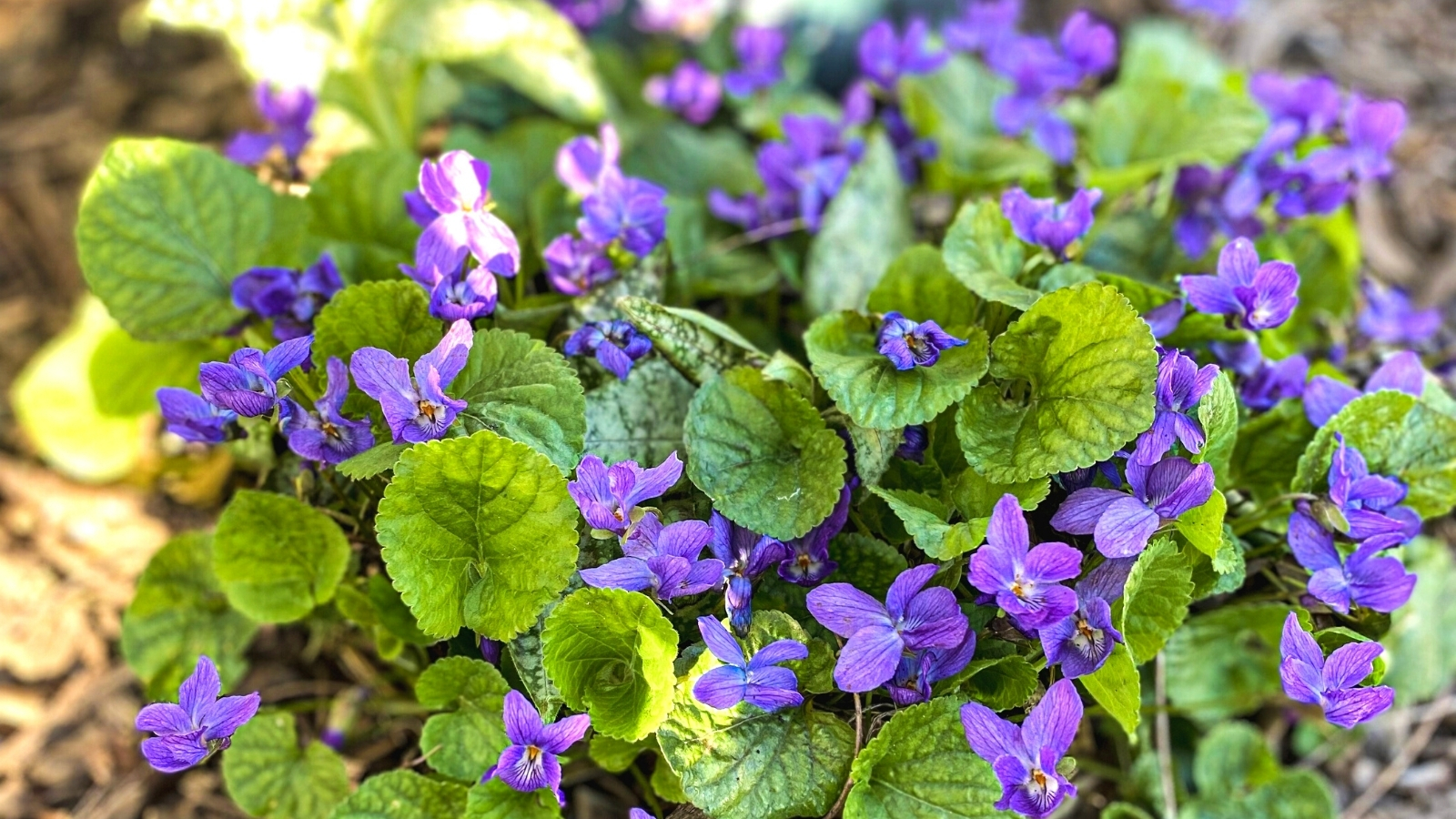
Growing a lush lawn in partially shaded areas can be a challenge. Many turf grasses grow sparsely or struggle to thrive in environments with reduced sun exposure. Violets, on the other hand, are well-adjusted to the shadows of trees and woodland edges. These plants flourish in lower-light conditions, such as north-facing lawns or areas beneath landscaping trees that cast a wide shadow.
If your lawn receives minimal sunlight, you should certainly consider leaving the wild violets to proliferate. You can easily mow them down and preserve the same polished aesthetic but with dark green heart-shaped leaves interspersed amongst the sparse shaded grass.
Vitamin-Rich Edible
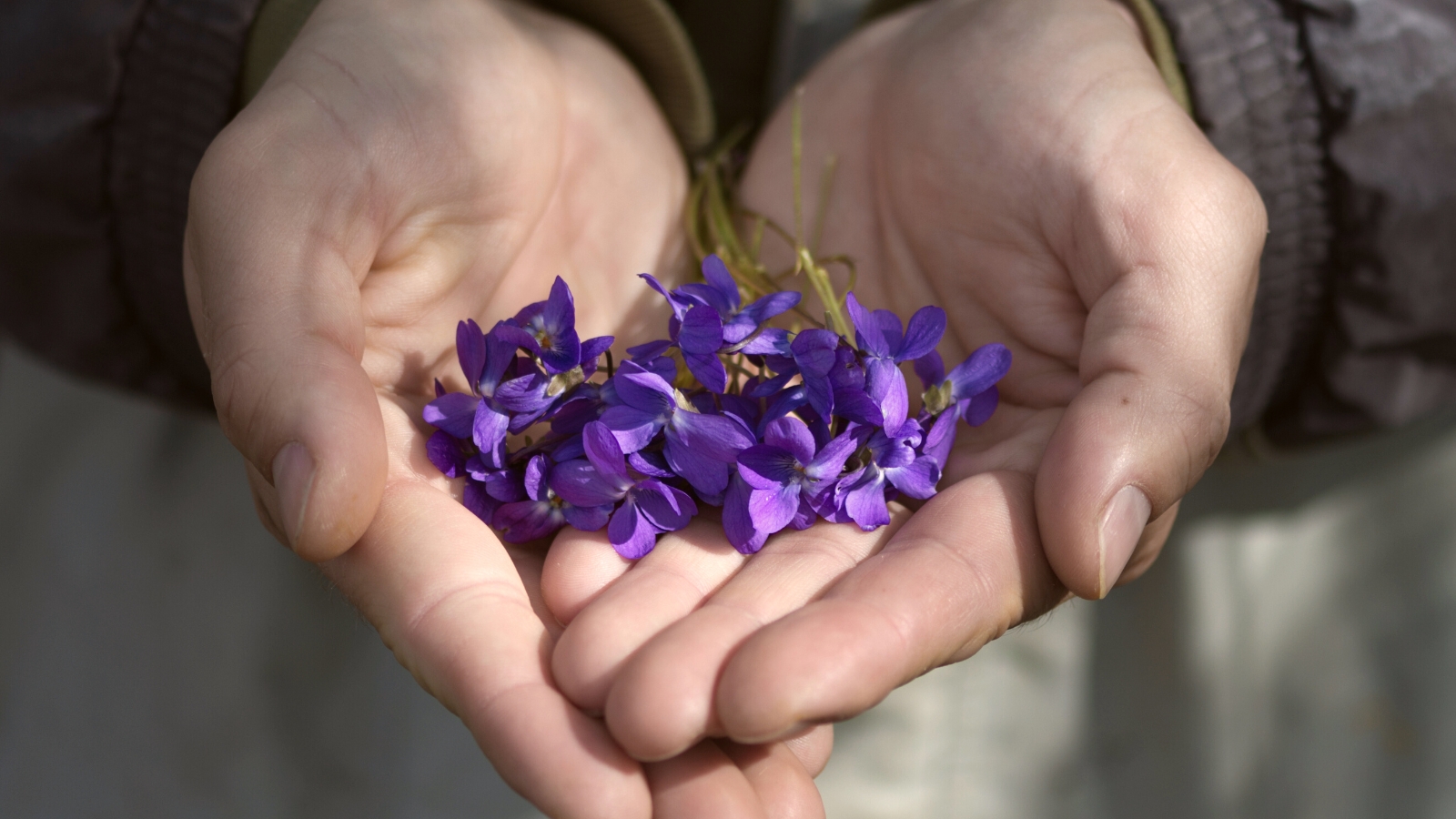
Most people don’t realize that the weeds they’re attacking could actually be a nutrient-rich food source for their family. Violets and their dandelion comrades are among the most underrated wild edible flowers and leaves. They have a delightfully sweet taste with notes of vanilla, wintergreen, and mild snap pea flavor.
After putting in so much effort to grow domesticated greens like kale and spinach, I am a sucker for edible and medicinal weeds; they offer unparalleled nutrition for literally no effort. Common violet weeds in your yard are more of a “superfood” than most greens you’ll find in the grocery store.
Studies show that these little heart-shaped leaves are extremely high in vitamins C and A, as well as antioxidants. A gram of these edible flowers and leaves apparently has more than twice the amount of vitamin C in the same amount of orange fruit. Moreover, a phytochemical called rutin is found throughout the plant. It serves as an anti-inflammatory and disease-preventative antioxidant in our bodies.
The leaves can be added to savory or sweet foods, including salads, vegetables, meats, fish, and teas. Violet flowers are popularly crystallized to decorate cakes, cookies, and desserts. They have a lovely perfume that can be extracted in crystallized sugar, infused in honey, or used as a cocktail garnish alongside rose petals. The flowers also make lovely jellies and homemade fragrant candles.
Decorative Uses
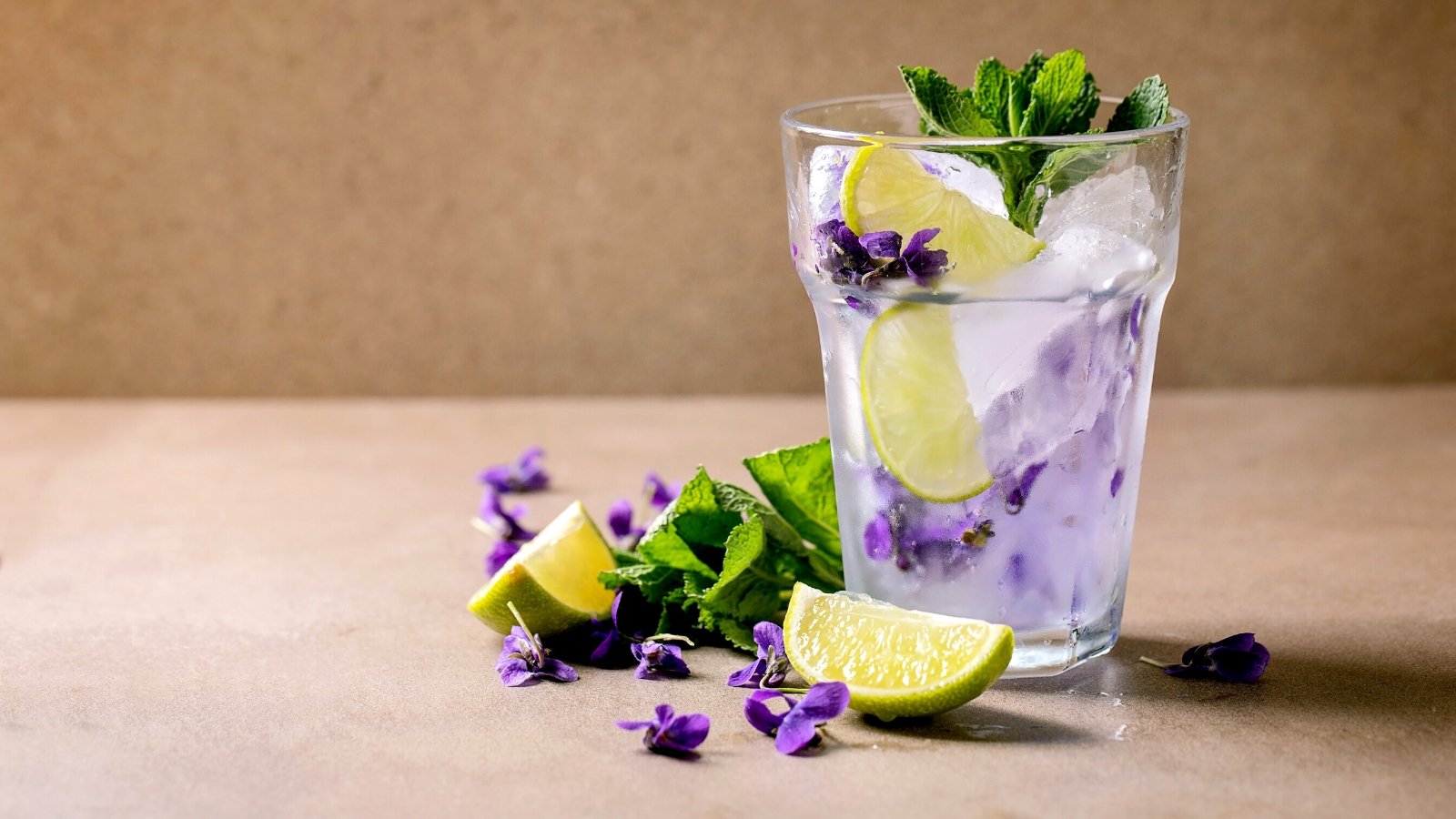
The dazzling bluish-violet color of these flowers inspires creativity. While your lawn lights up in spring color, take the opportunity to harvest some free and natural decor for your home. Violet flowers are a potent natural dye that can be used in everything from cooking to fabric to candle making.
Here are some fun decorative crafts to make use of these exuberant spring weeds:
- Use blooms as a natural purple-tinted dye for wool, cotton, or linen.
- Scatter blossoms over a spring tablescape.
- Freeze the flowers in ice cube trays for pretty colorful drinks.
- Candy them to garnish cocktails.
- Mix dried blooms with sugar for a lavender-colored botanical decor on cakes.
- Infuse candle wax with violets for a bright purple color.
- Dry violets and decorate your fragrant candles.
- Dry the flowers to mix into salts, dried teas, or seasoning blends.
- Infuse leaves and flowers into oil for a stunning purple blend.
If you want to keep it simple, just snip a few flowering stems and put them in vases around your home.
Herbal and Medicinal Uses
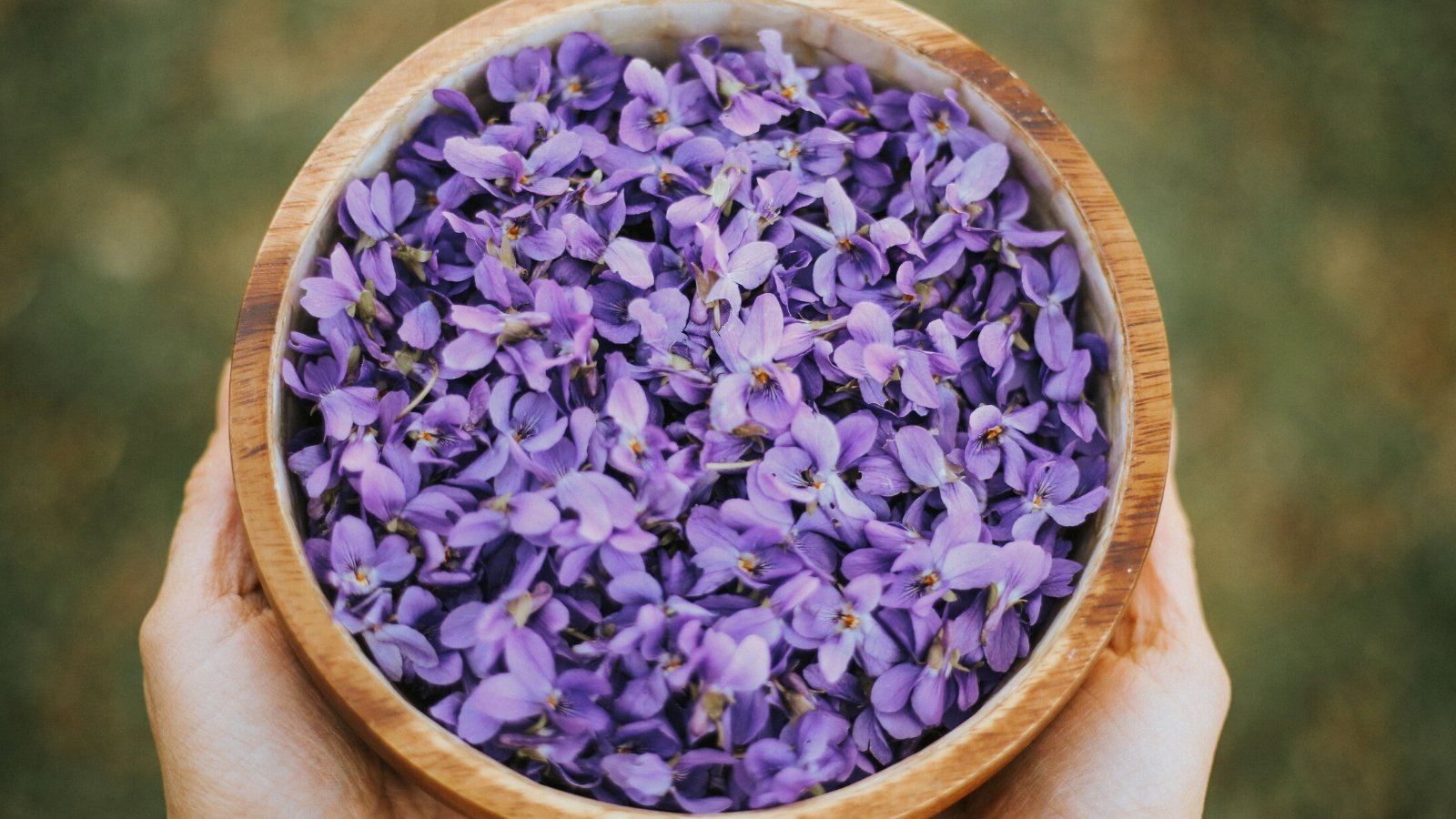
Many weeds that are edible also have traditional herbal uses. Violet is considered a gentle herbal medicine with very few risks. However, it’s important to properly identify the plant and consult your doctor before consuming them, especially if you have pre-existing medical conditions. But generally the flowers and leaves can be infused in a variety of herbal remedies that you can drink, eat, and apply topically.
Many of us buy teas and herbs from stores while so many herbal gems grow right outside our front doors. Leave the violets to proliferate in your lawn, offering potential health support and a connection to ancestral plant uses.
Reduce or Eliminate Herbicides
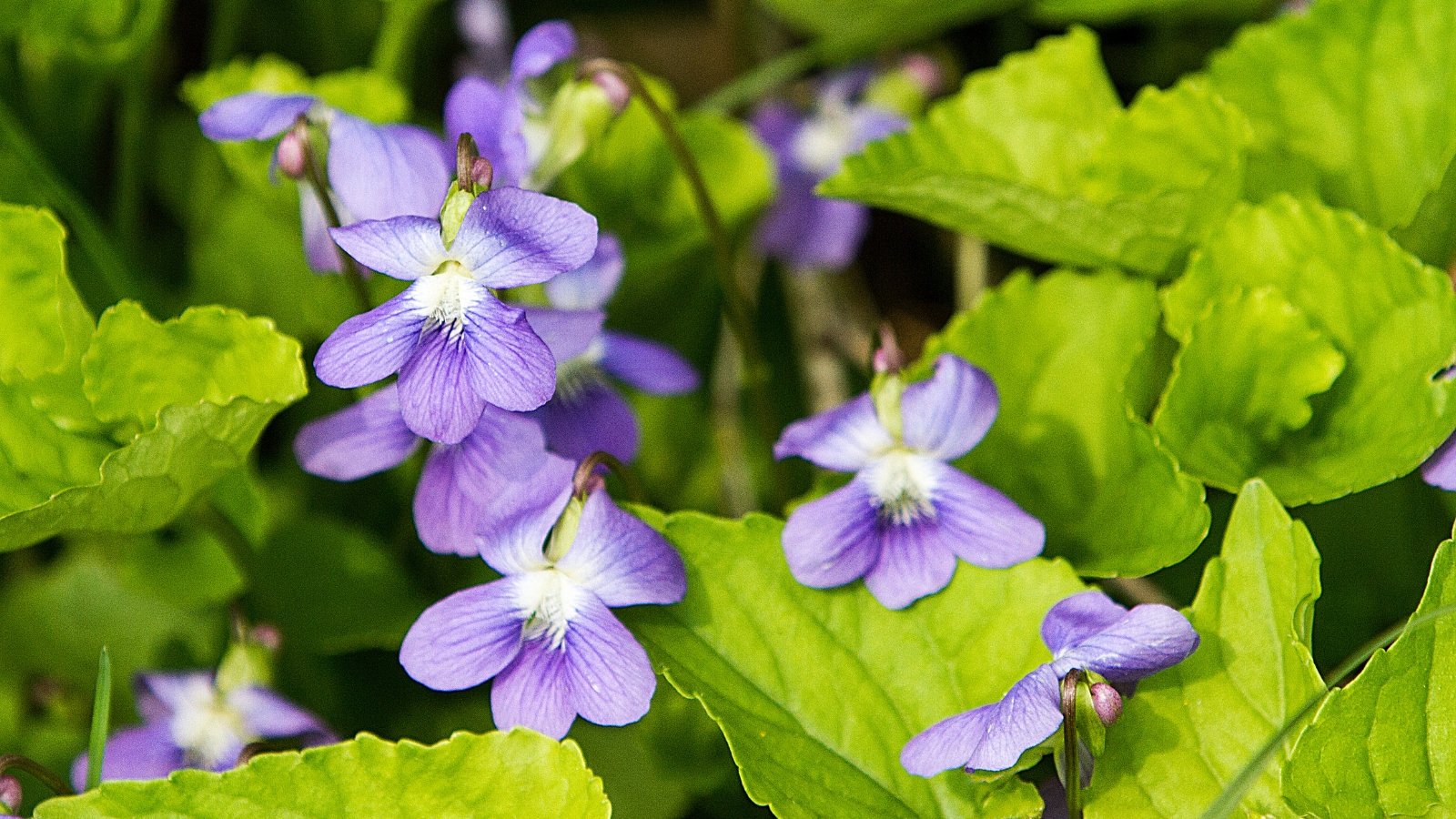
Wild violets are perennial weeds with a strong taproot and rhizomes that dig deep in the soil. This makes them difficult to dig up by hand, often becoming a source of frustration for gardeners and landscapers.
Many concentrated herbicides are applied to these little wild plants, including 2,4-D and Dicamba. These chemicals can be detrimental to local ecology and equally as harmful to human health. They can contaminate the soil, causing long-term damage to the beneficial bacteria and fungi that live below the ground.
Any chemical residues that leach into groundwater pose significant risks to aquatic life and water quality. Moreover, synthetic herbicides like 2,4-D are linked to increased risk of many types of cancer in humans.
If you want to reduce herbicide use or stop spraying your lawn altogether, begin embracing the violets. Mowing will be your best way to keep the lawn looking nice without spraying it with chemicals. The violets will stay low to the ground and complement your turf grass.
Final Thoughts
Let the violets bloom and leave the foliage for a greener lawn. Ultimately, the war on lawn weeds is a losing battle. It damages local ecology, reduces resources for pollinators, and potentially harms your health if you are using chemical herbicides. It is much easier to embrace the beautiful blue hues of these flowers and allow them to become part of your lawn’s ecosystem.




